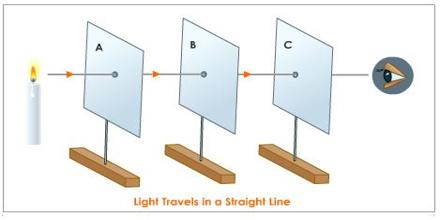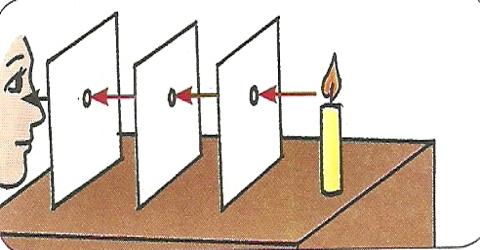Experiment: How Light Travels
Task: Take three note book covers of the same site. Place one cover after another in way that all the edges of the covers meet together on the same line. Now prick the entire three cover with a thick needle or nail. Now set the three boards perpendicularly on the table in a way that the three holes remain horizontally in the same line (you can stand the boards vertically using gum or clay or put the cover between two books). Now lit a candle and place it behind the boards at one end of the table in such a way that the flame reaches the height of the holes (fig).

Array the three boards so that the flame of the candle and the three holes of the board stay horizontally in a straight line. Now look at the candle from the other end of the table, you will be able to see the flame of the candle through the holes. Then, slightly displace one board so that the three holes no more remain in a straight line. Can you see the flame of the candle now? No. you cannot see the flame. Light could not enter your eye through the curvy way. What decision you may reach from this? Light do not travel in a tzigzag way. It always travels in a straight direction.
Light travels as a wave. But unlike sound waves or water waves, it does not need any matter or material to carry its energy along. This means that light can travel through a vacuum—a completely airless space. Nothing travels faster than light energy. It speeds through the vacuum of space at 186,400 miles (300,000 km) per second. The straight line traversed by light is known as the ray of light.










